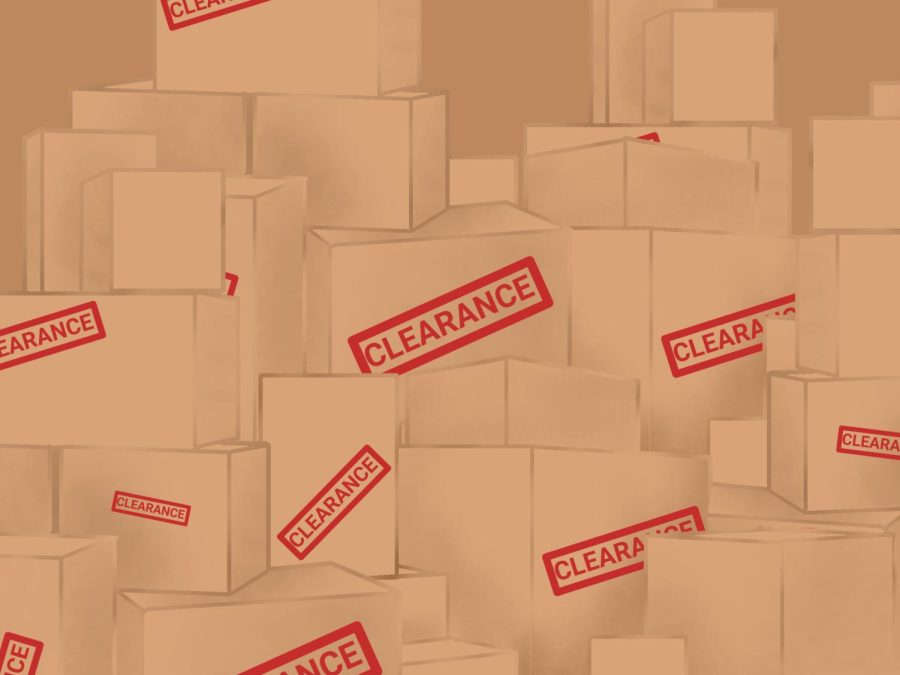Oversupply burdens big retailers amid supply chain issues
September 10, 2022
Some retail store chains announced they will store unsold items in their inventory as they face stagnating consumer demand and growing burden of overstocked items.
Retailers — including Kohl’s Corp., Gap Inc., Carter’s Inc. and Target Corp. — said that they will stow unsold merchandise with the intent of selling it next year.
This transition from a shortage to a surplus for retailers came quickly. From the onset of the COVID-19 pandemic, shoppers were forced to stay home and shops were forced to closed. As a result, retailers had to cancel orders from overseas suppliers.
Retailers faced a shortage due to delays at container ports and factories once economic activity revved up again. As a result, retailers ordered proactively excess amounts of products to be better prepared for growing demand.
Nevertheless, inflation-weary consumers lowered their spending on non-essential items and redirected their money toward the soaring prices for food and gas, creating a surplus of discretionary items.
Various strategies are being used by retailers to get rid of the inventory in the least costly way.
Kohl’s retained as much as $82 million worth of inventory. Carter’s is also holding a glut of merchandise to sell in retail locations during another season.
“We’re confident that we will be able to integrate our pack and hold inventory with future assortments,” Gap Chief Financial Officer Katrina O’Connell said on an earnings call, according to CNN.
The latest move by several chains addresses the issue as retailers won’t be forced to apply discounts on products immediately and can sell them at a higher price in the future when demand strengthens.
The downside to the strategy, however, is that retailers don’t have enough space in their inventories and must decide what to do with their unsold merchandise. There is also the risk that stored inventory won’t be to the taste of consumers in the future, and as a result won’t sell.
To avoid this issue, retailers like Target are cutting down prices on merchandise, especially during the Labor Day holiday, to attract demand and free up storage. But these companies risk diluting the brand.
“Promoting can be cheap today and very expensive tomorrow,” BMO Capital Markets analyst Simeon Siegel said, according to CNN.
Target reported a profit plunge of 90% and its price cuts left it with 36% more inventory than last year. Additionally, its net income fell significantly to $183 million, compared to the $1.8 billion it netted during the same period last year.
Target canceled $1.5 billion in fall discretionary product orders and used more store space to highlight deals.
Some retailers are taking returns and excess inventories and giving them to charities, returning them to manufacturers or, like Amazon.com Inc., even burning them in incinerators that generate electricity.
Retailers turn to liquidators to sell excess goods. In return, they receive only a fraction of the item’s worth, but for them, it still counts as a gain because they free up space while also earning some money for their products.
Such trends hit rival retailers like Walmart Inc. and Home Depot Inc. a little differently. They both reported higher sales in the last quarter, which were driven by consumers’ willingness to absorb price increases. Both Walmart and Home Depot mentioned that sales rose in part because of higher prices.
Walmart, however, expects an 8%-10% drop in annual earnings. This drop in earnings isn’t as large as other retailers because much of its sales and profits depend on essentials such as groceries and not primarily on discretionary items.
Walmart also reported that the number of middle- and higher-income shoppers has increased.
Although this comes as good news to the Federal Reserve, with consumer spending decreasing in some aspects, it is a difficult time for retailers with inflation and a sharp reversal in buying behavior.
Overall retail sales — a measure of spending at stores, online and in restaurants — were flat in July, when the gas prices dropped. But this was the Fed’s long-awaited, desired outcome of increasing interest rates.
The U.S. supply chain faces pressures on its trade lanes. One of these is a pileup of German containers due to striking port workers, leaving many of these storage containers stuck on land. The other pressure is China’s power rationing amid a heatwave, resulting in the shutdown of many manufacturing hubs.
The glut of inventory, shrinking margins and unpredictable consumer demand is causing turbulence in the economy. If this hard period passes with minor losses, however, the United States will be a step closer to reaching a balance in economic activity once more.








